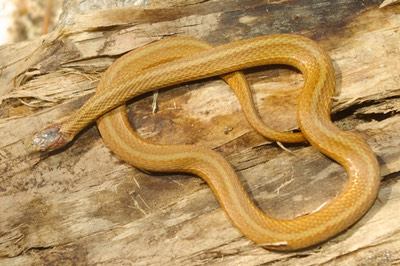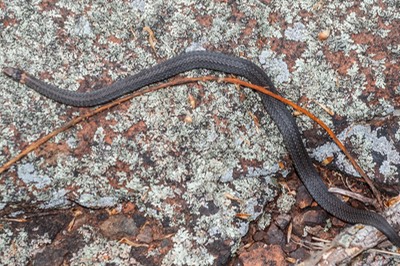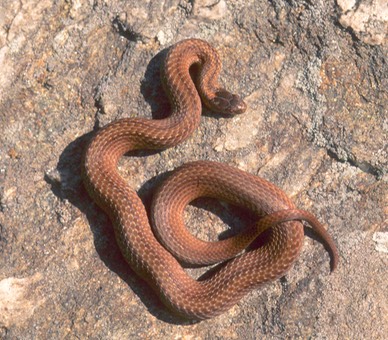
Red-bellied Snake adult
By the way, many photos of Red-bellied snakes look like the one I took above — that is to say the snake showing both its dorsal and ventral sides at the same time. Of course, this rarely happens naturally; these pictures are made when snakes have been held in hand, then placed down onto their backs, and as the snake slowly rights itself, the camera or IPhone is snapped!
Red-bellied snakes appear to be most at home in the vegetated wetlands of swamps, bogs, and beaver ponds. They are also common in upland meadows, fields and forested hillsides. Redbelly's are known to be slug specialists but those found in Western Mass appear to be non-native, introduced species. What else they feed upon naturally here is unknown, though land snails, earthworms (also mostly introduced), and small salamanders are likely. Redbelly's can curl their lips exposing rear teeth that have unusually sharp edges. This is likely a feeding adapatation, but may also provide some defense from predators. Here's a link to José do Amaral's 1999 abstract on the subject.

Once, I turned a large flat rock and beneath it were three Redbellies—one brown, one red, and one gray morph. It was frustrating not be able to get a picture of all three at the same time. Why this species is so polymorphic, like Timber Rattlesnakes, is unclear. I’m not sure if anyone’s looked at the ratio of offspring colors from different female morphs. Could be an interesting project for someone.
By the way, what the hell is a Redbelly Racer? Here is a specialty term from Berkshire County. Locals have been using this name like, forever, and I have no idea what they’re talking about.

Brownsnake (upper) and Red-bellied found under board


